70th Tank Battalion World War II History: Utah Beach, Normandy Region, France - June 1944
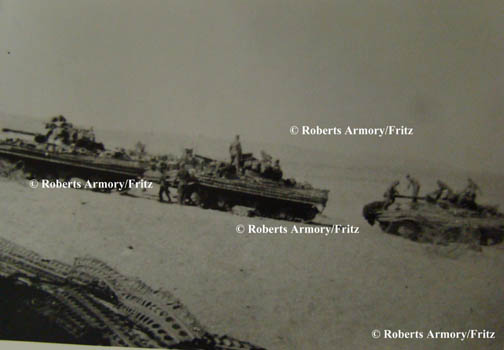
Photo 1
Photo 1 shows duplex drive (DD) tanks (amphibious tanks equipped with propellers) and canvas water skirts for floatation.
This photo was taken in England prior to D-Day. The plan was to launch a 30 ton Sherman tank from a landing ship and drive
it toward the shore like a watercraft. There was little freeboard (height above the water line) with these canvas skirts and
vehicles were easily swamped and sunk. The driver of the tank sat in his normal seat while the rest of the crew sat on top of the
tank to bail out in case it sank. Many 70th Tankers were skeptical of the integrity of the water skirts and spent their own money to reinforce the fabric.
Most of the 70th tanks that were launched made it to shore because of the relatively calm seas, compared to Omaha Beach where large waves swamped most of the DD tanks.

Photo 2
Photo 2 shows 70th Tank Battalion DD Tanks loading landing craft just prior to D-Day. Care had to be taken to avoid damage to the relatively fragile skirts.
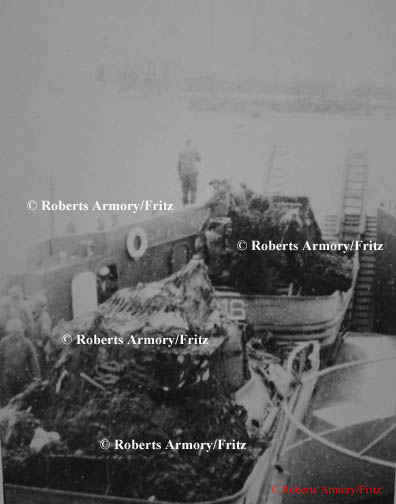
Photo 3
Photo 3 shows DD tanks loaded on an LCT, pulling away from the shore (D-Day-1)
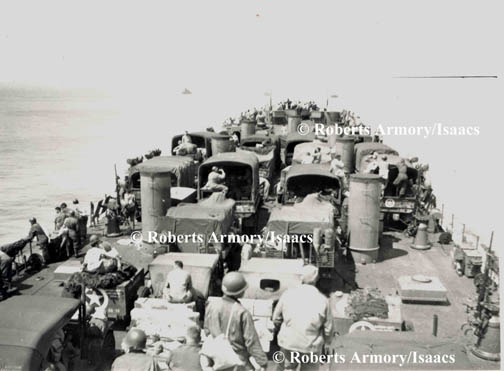
Photo 4
Heading toward Utah Beach on an LST (Photo 4): this is probably service company of the 70th Tank Battalion, which arrived at Utah Beach on approximately June 15, 1944. The LST is loaded with ammunition and fuel trucks.

Photo 5
Landing plan at Utah Beach (Photo 5). The red arrow points to one of the beach exits, exit 2. The green arrow points to a privately owned villa that is often seen in photos of the beach landing.
Photo 6 was taken by Captain Taynton approaching what appears to be exit 2. The date is June 15, 1944. Notice the established beachhead with barrage balloons along the coast.
Photo 7 shows the private villa (green arrow Photo 5) in March 2010.
Photo 8 shows exit 2 in March 2010.

Photo 6

Photo 7

Photo 8

Photo 9
Photo 9 shows transport ships viewed from Utah beach in the vicinity of exit 2.
Photo 10 shows sunken ships viewed from approximately the same position on Utah beach, March 2010. At least one of the sunken ships in Photo 10 appears in Photo 9.

Photo 10
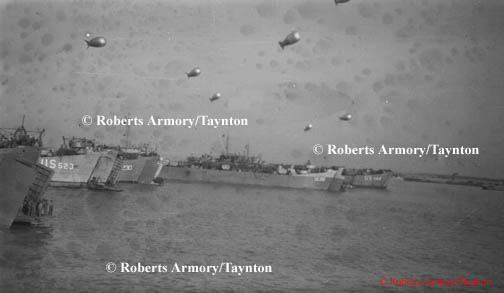
Photo 11
Utah Beach June 15, 1944, during Captain Taynton's detachment's arrival at Normandy.
LST 523 (Photo 11) struck a mine on June 19, 1944 and sank. It was carrying 20 Sherman Tanks and is now a popular diving site.

Photo 12
Photos 12 and 13 show what can happen if the vehicle's engine quits while landing, and the tide comes in.

Photo 13

Photo 14
Photo 14 shows an M4 Sherman named Cannon Ball. This tank is from Company C of the 70th Tank Battalion. (Note the Joe Peckerwood mascot on the left front side)
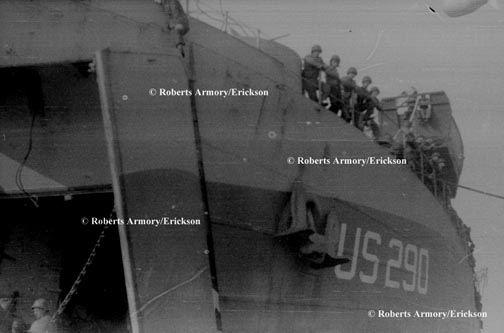
Photo 15
LST 290 unloads on or after June 15, 1944.
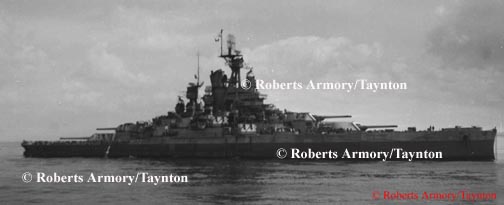
Photo 16
USS Nevada (BB-36), 27550 tons displacement, 583 feet in length, carrying ten 14" guns and twenty-one 5" guns, survivor of
Pearl Harbor attack, re-floated and refitted. Provided artillery support for D-Day.
This photo taken by Captain Taynton shows the Nevada riding at anchor on or
after June 15, 1944.
Photo 17 is an indicator mark on Utah beach showing the
approximate location of the Nevada.
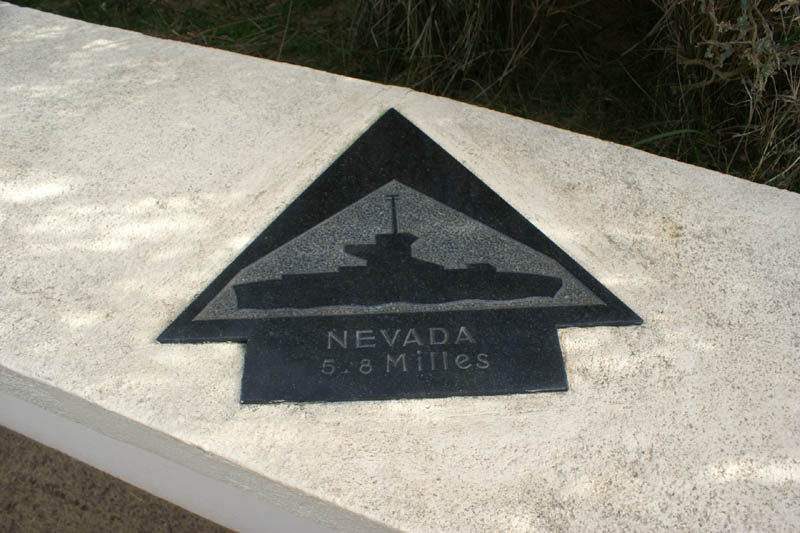
Photo 17

Photo 18
German barbed wire found at Utah Beach, March 2010
Copyright 1995 Charles C. Roberts, Jr



















 BACK TO ROBERTS ARMORY HOME
PAGE
BACK TO ROBERTS ARMORY HOME
PAGE